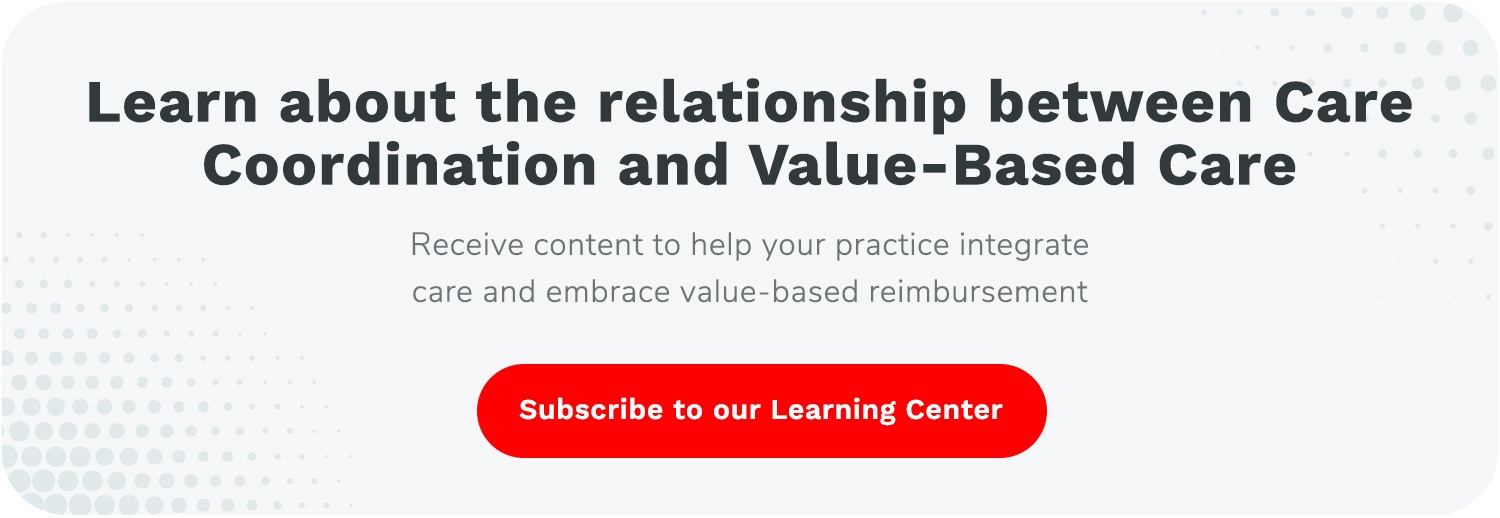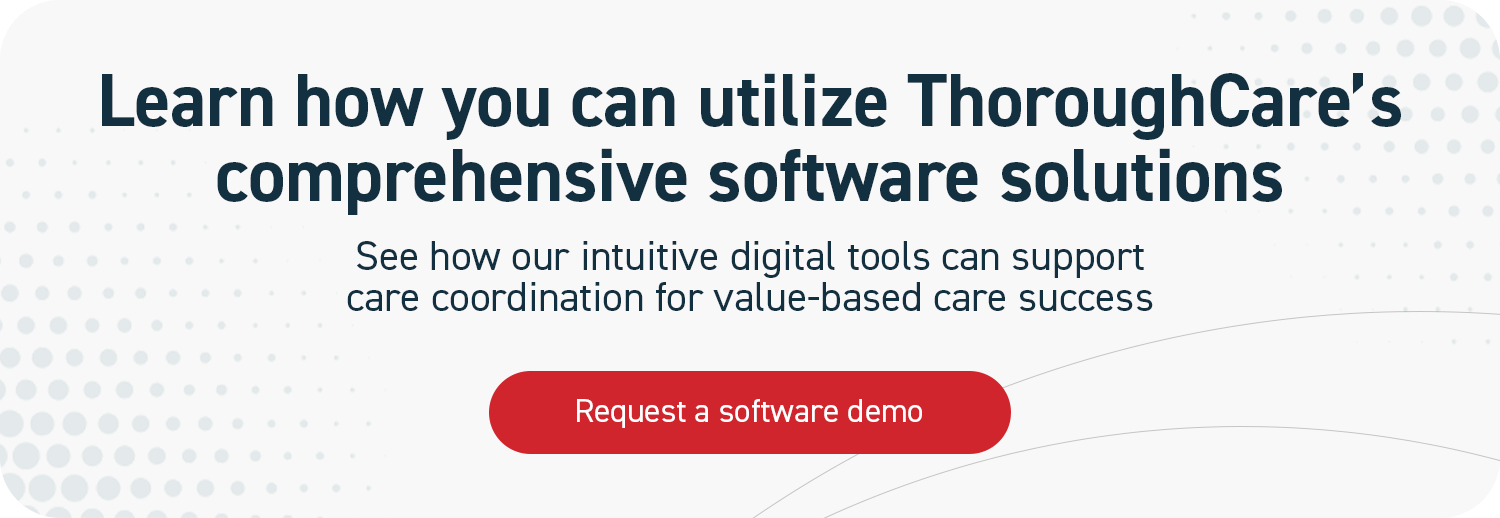3 Digital Solutions That Can Help Improve Clinical Efficiency
Clinical efficiency is vital to cutting costs for healthcare organizations, especially within value-based care. But staffing challenges, provider burnout, and mounting priorities can complicate this goal.
The tasks themselves can even present barriers.
For instance, nearly 84% of healthcare leaders surveyed in 2019 cited clinical documentation and coding as cumbersome. These administrative necessities can be time-consuming and further overwhelm care teams.
Studies have suggested that more than half of U.S. providers experience symptoms of burnout. Aside from the personal challenges of emotional or physical exhaustion people experience, burnout can affect patients and their health outcomes.
It can also be a sign of organizational malaise. With that, comes a price.
It’s been estimated that a staggering $4 trillion is spent per year on healthcare in the U.S. And roughly 25% of that is linked to administrative costs. Simplifying this aspect of care delivery could significantly reduce overall spending, according to McKinsey & Company.
To improve efficiency, whether administrative or clinical, some providers have turned to digital tools, such as patient portals or care coordination software. But how exactly do such tools increase performance?
At ThoroughCare, we’ve helped more than 600 clinics and physician practices implement digital solutions to more effectively deliver treatment. Our care coordination software supports billing for multiple care management programs and provides near real-time medical information for patients and staff.
This article will highlight a few digital solutions for clinical efficiency and cover how each tool can help increase capacity.
Which Digital Tools Can Improve Clinical Operations?
Several digital solutions for increased clinical efficiency are available to providers.
Below, we’ll quickly review three go-to options that connect physicians to those they help. We’ll also offer a patient use case for each solution.
1. Patient Portals
A patient portal is a secure website where someone can view their health information, 24/7.
Their use by providers and healthcare organizations has become more common. According to the Office of the National Coordinator for Health Information Technology, approximately 40 percent of patients offered access to a portal in 2020 used one.
Patient portals can present a variety of information. This includes:
- Medications
- Immunizations
- Lab results
- Allergies
- Recent doctor visits
- Discharge summaries
Some portals also support additional features for patients, such as the ability to message their doctor, request prescription refills, and view educational content.
Patient Portals Offer Direct Access and Reduce Administrative Tasks
The description above implies how your patient could use a portal to engage their care team.
Having secure web access to medical records or the ability to schedule their own appointments lends your patient significant autonomy. This also reduces the need for clinical staff to carry out every patient interaction.
Without having to navigate phone calls, or needing to schedule office time for a simple update, practices can hand significant clinical access to patients, freeing staff of additional duties.
According to a study published by the Journal of Medical Internet Research, the use of this tool can also influence patient satisfaction by generating self-awareness of one’s health. An improved care experience can be an added benefit of streamlining operations.
2. Care Coordination Software
Care coordination software is a digital tool used by home health agencies, accountable care organizations (ACOs), and physician practices to coordinate various types of patient services. These can include care management programs, such as Chronic Care Management (CCM), or remote vital tracking through Remote Patient Monitoring (RPM).
Care coordination solutions can also help support a practice’s workflow by automating specific tasks or identifying inefficiencies through data analytics. Differing from patient portals, this tool is used by clinical staff as a means to engage those they serve.
It can be a powerful resource when used strategically.
Care Coordination Solutions Can Engage Patients in Proactive Disease Management
Approximately 75 million Americans live with two or more chronic illnesses. Many of these people have likely discussed such conditions with their doctors, but how many are actively managing them?
CCM provides a means for your clinical team to regularly engage with patients, guiding them through chronic disease management, without requiring their in-office presence. Much of the program can be offered over the phone or through telehealth solutions.
According to the Journal of General Internal Medicine, patients reported several benefits from CCM participation. For instance, CCM is reported to have improved access to patients’ primary care teams and strengthened their continuity of care. This can contribute to clinical efficiency in the short and long term. Namely, an active approach to chronic disease management can help patients avoid complications, possibly reducing hospital admissions.
Care coordination software can enable your practice to efficiently provide this service, connecting your patients to a care management solution that’s shown to be effective.
3. Mobile Apps
Smartphone applications can support clinical workflows in multiple ways. These can include telehealth tools and chat features that connect to care teams. In the future, this could involve disease detection through machine learning.
Apps can vary by how they’re optimized.
Some mobile patient tools focus on urgent care, while others may revolve around outpatient needs. For improving clinical efficiency, a simple app, designed well, can easily facilitate care team access beyond the clinic.
According to a study published by the Agency for Healthcare Research and Quality, a mobile app that was created to connect with asthma patients reported strong participation rates. Approximately 92 percent of users were diligent in self-documenting outcomes throughout a clinical study.
Mobile Patient Apps Help Expand Telehealth Access
The COVID-19 pandemic sent telehealth mainstream.
Now, there’s some expectation from patients to have access to it, pandemic or not. A survey of 1,000 patients conducted by Kyruus Research found a high rate of approval for virtual health visits. Approximately 75 percent of this sample population reported feeling “overwhelmingly satisfied” by the experience.
Mobile apps support an IT infrastructure for telehealth services.
By adopting such a tool, your practice can align with the trend and innovate the care experience you offer. This can support patient engagement and satisfaction metrics as much as it can expand your practice’s capacity to better serve patients.
With disease detection through artificial intelligence, future apps could allow for greater efficiency in pre-diagnosing patients. Without the immediate assistance of their care team, a patient could submit symptoms through an application, and a machine database could provide possible recommendations prior to speaking with a doctor.
This could reduce wait times and place power in the hands of patients.
ThoroughCare’s Care Coordination Solution
Digital software solutions are available to help your practice embrace integrated, coordinated care. At ThoroughCare, we’ve designed our care coordination software for easy clinical use with an intuitive interface that allows you and your team to streamline multiple care management and wellness programs.
We offer extensive training opportunities and learning resources. Our tech support team is readily available, and we integrate with several of the leading EHR providers. Our software modules are designed exactly to federal rules and regulations for care management programs, and they’re easy to use and understand.




